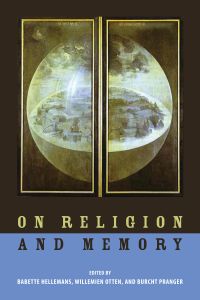Save 25% plus free shipping during our Winter Sale! Use promo code JOY2025. Expires 1/5/26.
Remembering Wolsey
A History of Commemorations and Representations

This book can be opened with

Remembering Wolsey seeks to contribute to our understanding of historical memory and memorialization by examining in detail the commemoration and representation of the life of Thomas Wolsey, the sixteenth-century cardinal, papal legate, and lord chancellor of England. Hornbeck surveys a wide range of representations of Cardinal Wolsey, from those contemporary with his death to recent mass-market appearances on television and historical fiction, to go beyond previous scholarship that has examined Wolsey only in an early modern context.
Remembering Wolsey contributes significantly to the ongoing reimagining of English church history in the years prior to the Reformation. Surveying chronicle accounts, pamphlets, plays, poems, historical fictions, works of historical scholarship, civic pageants and monuments, films, and television programs, the book shows how an extended sequence of authors have told widely varying stories about Wolsey’s life, often through the lens of their own religious and ideological commitments and/or in response to the pressing concerns of their times.
Displaying an impressive depth and range of scholarship, Patrick Hornbeck expertly traces the reputation of one Tudor England’s most controversial figures, from the judgements of sixteenth century writers to modern day TV and film dramas. Hornbeck sheds new light not just on Wolsey himself, but on how we see him today, and how we remember the English Reformation.—Michael Evans, Delta College
Beyond illuminating Wolsey and his legacy, as a work that critically engages with the history of popular culture, this book is also an outstanding contribution to the fairly new study of “Tudorism” or “early modernism”... This type of academic work has become especially urgent given that television shows, films, and novels about the age of the Tudors only seem to be getting more popular as media become increasingly more accessible to consumers and able to shape their perceptions of history, Wolsey’s included.—Journal of British Studies
...[a] fascinating and thought-provoking study... [Hornbeck] reflects upon the ways Wolsey’s story has been told, not simply by historians, but in historical fiction, civic pageantry, and on the stage. In so doing, he sheds light on broader questions.—Church History
List of Abbreviations vii
Acknowledgments ix
Introduction: Memory and Representation 1
1. The Basic Ingredients (1530–c.1600) 19
2. Parchment, Pamphlets, and Plays: Into the Early Stuart Period (c. 1580–1641) 53
3. From Restoration to Catholic Emancipation: Texts and Places (1641–c.1860) 88
4. Historical Fiction, Academic History, and Civic Pageantry (c. 1850–c.1960) 120
5. From A Man for All Seasons to Wolf Hall (c. 1960–present) 157
Conclusion 191
Notes 201
Bibliography 255
Index 279
Color plates follow page 148



